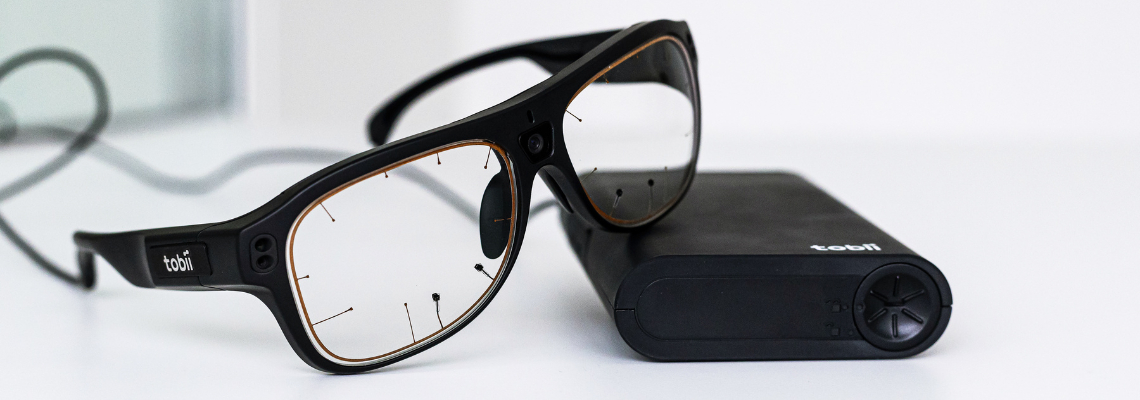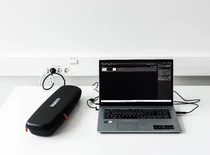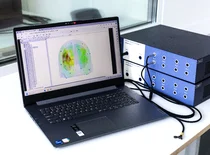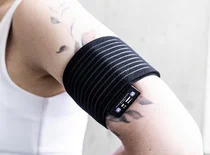fNIRS system.
Functional near-infrared spectroscopy (fNIRS) is a non-invasive neuroimaging technology for measuring brain activity. This system uses a light source, usually an infrared diode, which shines through the skin into brain tissue. This allows the assessment of brain activity and functional interactions, which can be useful in a wide range of research and other fields related to brain activity. The FNIRS system is considered to be a safe and convenient alternative to other neuroimaging techniques such as functional magnetic resonance imaging (fMRI) because it is non-invasive and can be used on moving subjects.
Electrophysiological Signal Measurement System (TMSi).
A neurophysiological research tool that is designed to record and analyse brain activity. This system allows external recording of brain activity using a variety of sensors and electrodes, helping to understand how different areas of the brain communicate with each other and how they influence behaviour and consciousness.
Eye tracking system.
Eye tracking technology is designed to monitor and record a person’s eye movements. It uses special cameras and algorithms to track exactly where a person’s eyes are looking at any given moment. It is a tool to understand people’s focus, emotions and behaviour in different situations.
3D motion measurement.
3D Motion Measurement is a technology for tracking and capturing the motion of objects in three dimensions. This system usually uses optical cameras, sensors or other devices to determine the position and direction of movement of objects. It aims to provide accurate and dynamic motion tracking, which can be applied in a variety of fields such as biomechanics, sports sciences, robotics, game development, etc. 3D motion measurement systems provide valuable information about the movement of objects, allowing researchers or engineers to understand, analyse and improve the performance of movement skills or systems.









